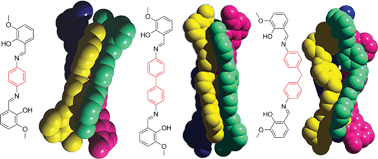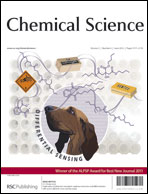Supramolecular architectures for controlling slow magnetic relaxation in field-induced single-molecule magnets†
Abstract
In order for molecular magnetic materials to become functional, they must retain their magnetization at reasonable temperatures implying high energy barriers for spin reversal. The field of single-molecule magnets (SMMs) has recently experienced an explosion of research targeting these high anisotropic barriers. Achieving such feats has involved increasing the spin of a complex and/or increasing the inherent magnetic anisotropy. Exerting control over the total spin of a complex has been possible contrary to controlling the global anisotropy. Herein, we report the experimental and theoretical study of local anisotropy alignment on DyIII metal centers and their orientation relative to other centers in rare, dinuclear quadruply-stranded helicate/mesocate complexes. A detailed study of these supramolecular architectures has advanced our knowledge of the origins of magnetic relaxation in SMMs which was shown to arise from minute changes in bond distances around the metal centers leading to changes in the local anisotropy and, in turn, the effective energy barriers.


 Please wait while we load your content...
Please wait while we load your content...